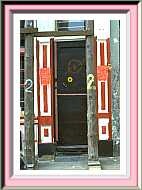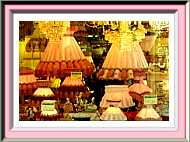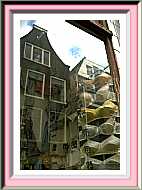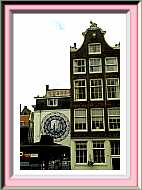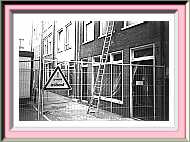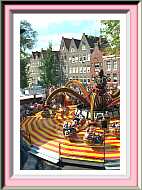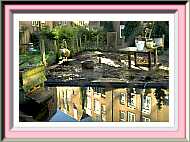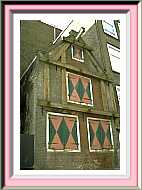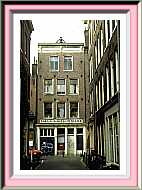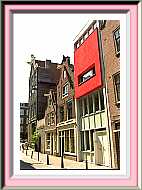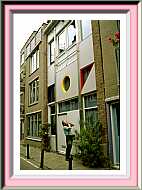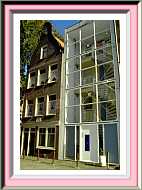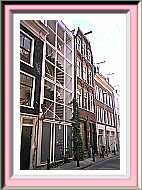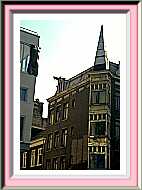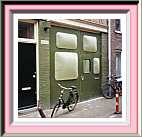|
the Pain of Urban Renewal
At the end of 1960 the Central Administration of Amsterdam wants to
demolish the Jordaan completely and put up all new buildings. But the heavy
protests of the Amsterdammers are successful and from 1972 the Jordanese
characteristic streets are preserved. The not too ramshackle houses are saved
and, if neccesary, provided with some support beams on the outside,
waiting for future thorough renovation;
most of the foundations are not suited enough for the peat underground.
The holes in the façade lines will be filled up, partly with rebuilding in the
original style and partly with modern style buildings, sometimes screamingly provocative.
The latter is possibly suitable in the outer cities, however in a historical district it hurts the eye and
distracts for the wrong reasons from the so typical chaotic-looking but harmonic façade lines.
And there are still old houses coming down, with permission or by accident.
Much too often erected with cheap glew- and punaise constructions.
Many of the streets have been changed from character.
Not only by the constructions but also because of the disappearing of the little shops
and workshops. Now housing lifeless galeries and antique shops.
What is lost forever
and what has come instead
in the last 25 years?
|
|
